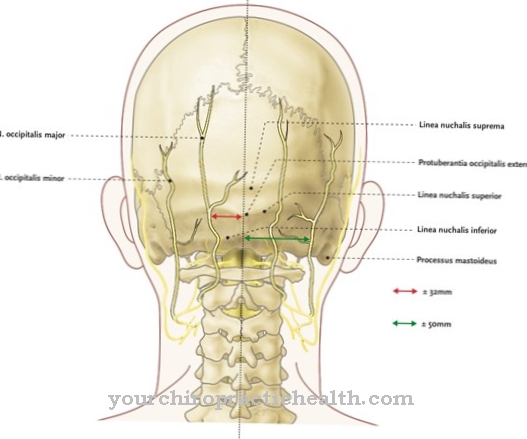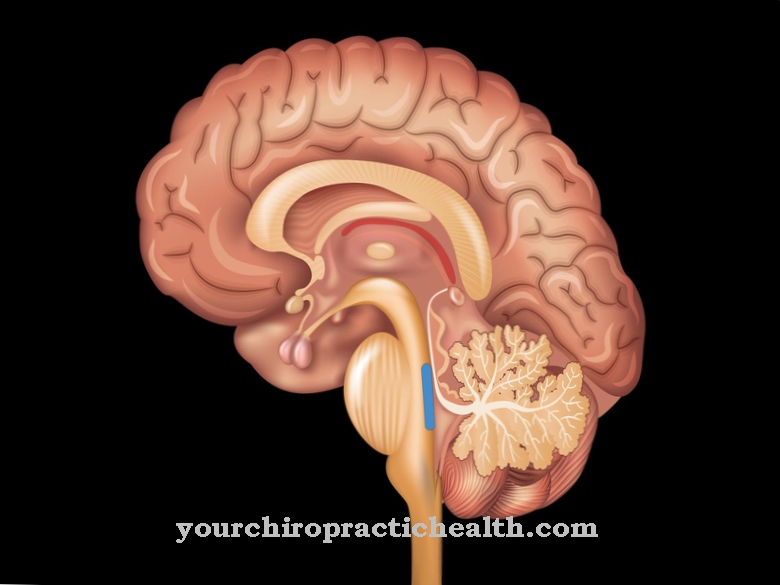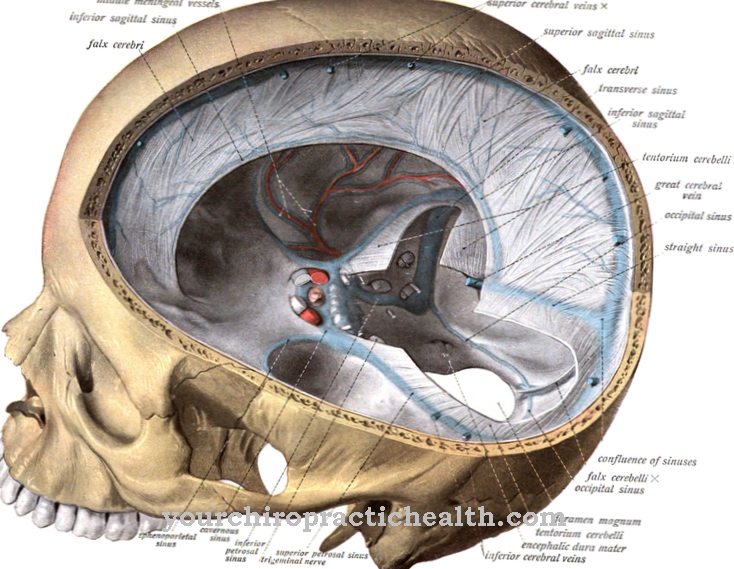Of the synaptic cleft represents the gap between two nerve cells in the context of a chemical synapse.
The electrical nerve signal of the first cell is converted into a biochemical signal at the terminal button and is transformed again into an electrical action potential in the second nerve cell. Active substances such as medication, drugs and poisons can intervene in the function of the synapse and thereby influence the processing and transmission of information within the nervous system.
What is the Synaptic Fissure?
Nerve cells transmit information in the form of electrical signals. At the transition between two neurons, the electrical signal has to overcome a gap. The nervous system has two options for bridging this distance: electrical synapses and chemical synapses. The gap in the chemical synapse corresponds to the synaptic gap. In humans, most synapses are chemical in nature.
Electrical synapses are also known as gap junctions (in German roughly: "gap connection") or nexus; the use of the term “synaptic gap” is not common with electrical synapses. Instead, neurology generally speaks of extracellular space. The connection between the nerve cells in the nexus is created by channels that grow from both the presynaptic cytoplasm and the postsynaptic cytoplasm and meet in the middle. Through these channels, electrically charged particles (ions) can change directly from one neuron to another.
Anatomy & structure
The synaptic gap is 20 to 40 nanometers wide and can thus connect distances between two nerve cells that would be too wide for gap junctions. Gap junctions span a distance of only 3.5 nanometers on average. The height of the synaptic gap is around 0.5 nanometers.
On one side of the gap is the presynaptic membrane, which corresponds to the cell membrane of the terminal button. The end button, in turn, forms the end of a nerve fiber, which thickens at this point and thus creates more space inside. The cell needs this additional space for synaptic vesicles: membrane-covered containers in which the messenger substances (neurotransmitters) of the cell are located.
On the other side of the synaptic gap is the postsynaptic membrane. It belongs to the downstream neuron, which receives the incoming stimulus and, under certain conditions, passes it on. The postsynaptic membrane contains receptors, ion channels and ion pumps, which are essential for the functioning of the synapse. Various molecules can move freely in the synaptic gap, including the neurotransmitters from the terminal button of the presynaptic nerve cell, as well as enzymes and other biomolecules that partially interact with the neurotransmitters.
Function & tasks
Both the peripheral and the central nervous system transport information within a cell using electrical impulses. These action potentials arise on the axon hill of the nerve cell and move across the axon, which together with its insulating myelin layer is also known as the nerve fiber. At the end button, which is at the end of the nerve fiber, the electrical action potential triggers the influx of calcium ions into the end button.
They cross the membrane with the help of ion channels and lead to a charge shift. As a result, some of the synaptic vesicles fuse with the outer membrane of the presynaptic cell, so that the neurotransmitters contained therein get into the synaptic cleft. This crossing takes an average of 0.1 milliseconds.
The messenger substances cross the synaptic gap and can activate receptors on the postsynaptic membrane, each of which reacts specifically to certain neurotransmitters. If the activation succeeds, channels in the postsynaptic membrane open and sodium ions flow into the interior of the neuron. The positively charged particles change the electrical voltage of the cell, which is slightly negative in the resting state. The more sodium ions flow in, the stronger the depolarization of the neuron, i.e. H. the negative charge is reduced. If this membrane potential exceeds the threshold potential of the postsynaptic nerve cell, a new action potential arises on the axon hill of the neuron, which again spreads in electrical form over the nerve fiber.
Enzymes are located in the synaptic gap so that the released neurotransmitters do not permanently irritate the postsynaptic receptors and thereby trigger permanent excitation of the nerve cell. They deactivate the messenger substances in the synaptic cleft, for example, by breaking them down into their components. Following the stimulation, ion pumps actively restore the initial state by exchanging particles on both the presynaptic and the postsynaptic membrane.
You can find your medication here
➔ Medicines for painDiseases
Numerous drugs, drugs and poisons that have an impact on the nervous system develop their effect on the synaptic cleft. An example of such a drug is monoamine oxidase inhibitors (MAOIs), which can be used to treat depression.
Depression is a mental illness, the main characteristics of which are depressive mood and loss of joy and interest in (almost) everything. Depression is caused by numerous factors and drug therapy is usually only part of the treatment. One influencing factor is disorders associated with the neurotransmitters serotonin and dopamine. MAOIs work by blocking the enzyme monoamide oxidase.
This is responsible for the breakdown of various messenger substances in the synaptic cleft; its inhibition accordingly means that neurotransmitters such as dopamine, serotonin and noradrenaline can continue to stimulate the receptors of the postsynaptic membrane. In this way, even reduced amounts of the messenger substances can lead to a sufficient signal. Another mechanism of action is based on nicotine. In the synaptic cleft, it stimulates nicotinic acetylcholine receptors and thus, like the main transmitter acetylcholine, causes the influx of ions into the postsynaptic cell.
























.jpg)



